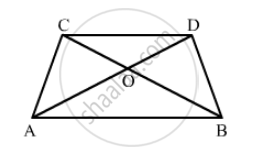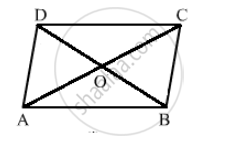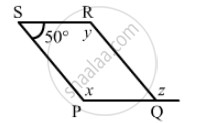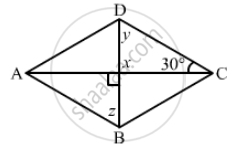Advertisements
Advertisements
Question
Given below is a parallelogram ABCD. Complete each statement along with the definition or property used.
(i) AD =
(ii) ∠DCB =
(iii) OC =
(iv) ∠DAB + ∠CDA =

Solution
The correct figure is

\[(i)\]\[AD = BC (\text{ opposite sides of a parallelogram are equal })\]
\[(ii)\] \[\angle DCB = \angle BAD \left( \text{ opposite angles are equal } \right)\]
\[(iii)\] \[OC = OA \left( \text{ diagonals of a prallelogram bisect each other } \right)\]
\[(iv)\] \[\angle DAB + \angle CDA = 180° \left( \text{ the sum of two adjacent angles of a parallelogram is } {180}^0 \right)\]
APPEARS IN
RELATED QUESTIONS
Name the quadrilaterals whose diagonals are perpendicular bisectors of each other
The following figure is parallelogram. Find the degree values of the unknown x, y, z.

The following figure is parallelogram. Find the degree values of the unknown x, y, z.

Which of the following statement is true for a rhombus?
It has two pairs of parallel sides.
Which of the following statement is true for a rhombus?
Two of its angles are at right angles
ABCD is a rhombus. If ∠ACB = 40°, find ∠ADB.
Construct a rhombus whose diagonals are of length 10 cm and 6 cm.
ABCD is a rhombus and its diagonals intersect at O.
(i) Is ∆BOC ≅ ∆DOC? State the congruence condition used?
(ii) Also state, if ∠BCO = ∠DCO.
State with reason whether the following statement is ‘true’ or ‘false’.
Every parallelogram is a rhombus.
If opposite angles of a rhombus are (2x)° and (3x - 40)° then value of x is ______.
